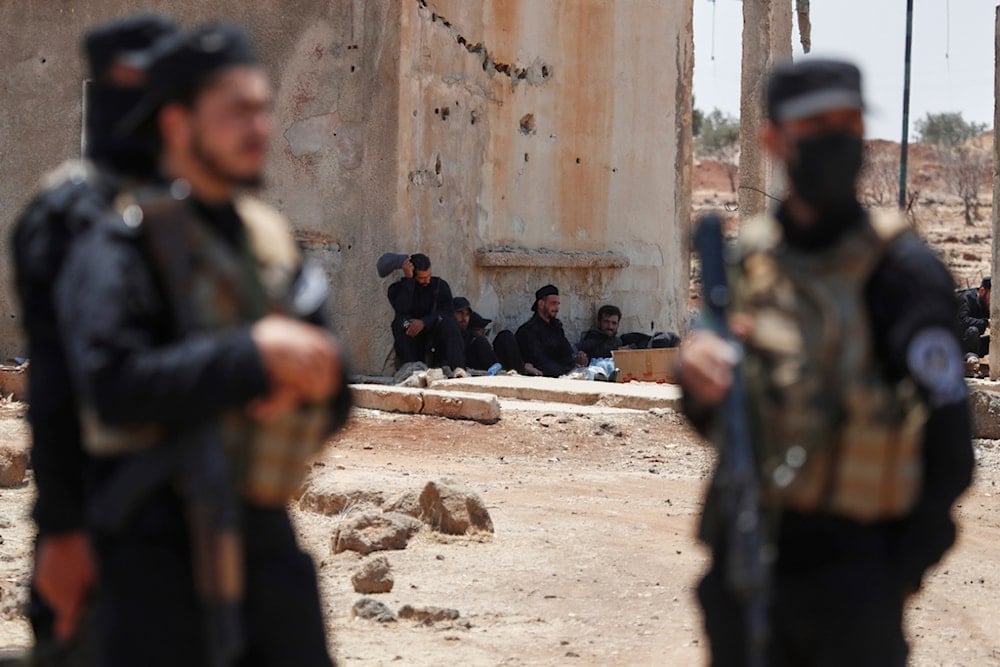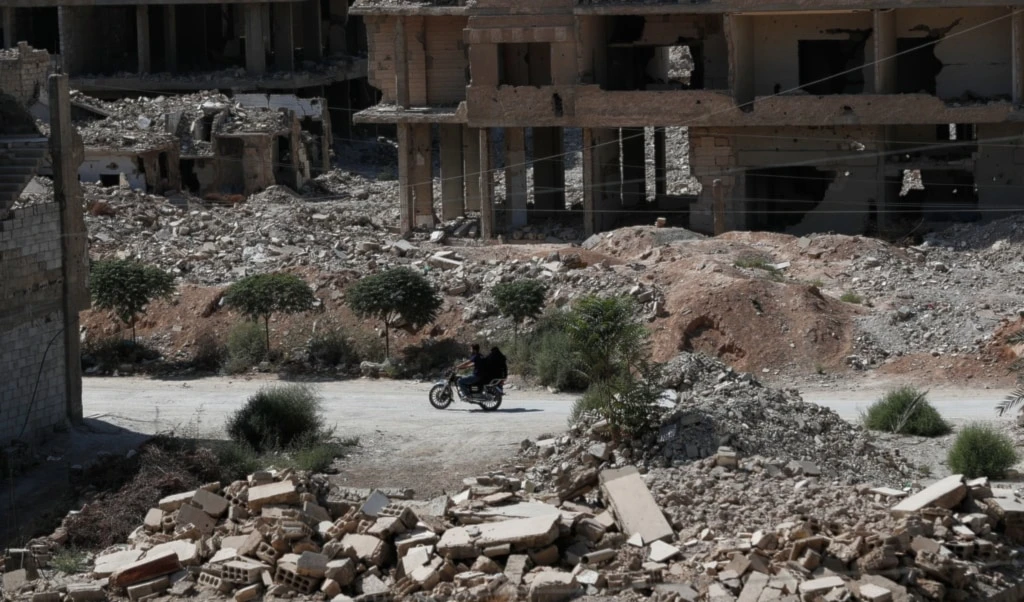Interior Ministry say conducted operation against ISIS cells in Syria
Syrian forces, in coordination with intelligence, dismantle ISIS cells across several provinces following weeks of surveillance and intelligence gathering.
-

Syrian security forces rest near a damaged building as they deploy in Busra al-Harir village, in southern Syria, Sunday, July 20, 2025 (AP)
The Syrian Ministry of Interior said its security forces, working with the General Intelligence Directorate, conducted a wide-ranging operation against ISIS cells in multiple provinces, acting on detailed intelligence and weeks of continuous surveillance of their movements, according to SANA.
In a statement released on its Telegram channel, the ministry explained that the operation is part of broader national efforts to combat terrorism and counter plots that threaten the country’s security and the safety of its citizens.
It said the raid resulted in the dismantling of several terrorist cells, the arrest of numerous wanted individuals, and the seizure of materials and evidence linked to their activities, which are currently being analyzed as investigations continue.
According to the statement, the operation reflects the high level of coordination among security agencies and their effectiveness in proactively addressing threats, underscoring their commitment to protecting the nation’s security and stability.
ISIS threat in Syria persists despite territorial defeat
Despite its territorial defeat, the threat posed by ISIS remains persistent in Syria. The group has shifted from controlling territory to operating through decentralized cells, primarily in remote and unstable areas. According to the Peace Research Institute Frankfurt (PRIF), around 2,500 active ISIS fighters are still active across Syria and Iraq, maintaining the group’s ability to plan and execute attacks.
ISIS has capitalized on Syria’s fragmented control to re-establish footholds in regions like the al-Safa desert and parts of eastern Homs. In October, the group claimed responsibility for attacks targeting government forces in Sweida, marking its first such operations in months. These areas provide militants with relative freedom of movement, allowing them to train, regroup, and avoid detection.
The threat extends beyond Syria’s borders. A European Union Agency for Asylum (EUAA) report warned that instability in Syria could enable jihadists to migrate west or activate sleeper cells abroad. French intelligence has also raised concerns over ISIS efforts to coordinate with foreign affiliates, further amplifying the group’s transnational threat potential.
Meanwhile, detention camps in northeastern Syria, such as al-Hol and Roj, house thousands of individuals affiliated with ISIS, including women and children. Many remain ideologically committed, and security experts continue to describe these facilities as long-term security risks due to potential escapes or future recruitment.
ISIS launches sporadic attacks in Syria
In one of the deadliest incidents in recent months, a suicide bombing targeted the Prophet Elias Church near Damascus on June 22, 2025, killing at least 22 people. The attack, which ISIS claimed responsibility for, marked a disturbing escalation in the group’s targeting of civilian spaces.
On October 16, 2025, an explosive device struck a bus carrying Ministry of Energy personnel near Deir Az Zor, killing four and injuring nine others. Syrian state media blamed ISIS for the blast, which occurred in an area known for previous militant activity.
The Syrian Democratic Forces (SDF) reported on November 1, 2025, that they captured a five-member ISIS cell north of Raqqa, and noted that the group was allegedly in the final stages of planning attacks on security installations in the region.
According to a June 12, 2025 report by Reuters, security officials in Syria and Iraq have foiled over a dozen ISIS plots this year. Intelligence suggests the group is actively rearming and reactivating sleeper cells in preparation for renewed assaults.

 4 Min Read
4 Min Read










